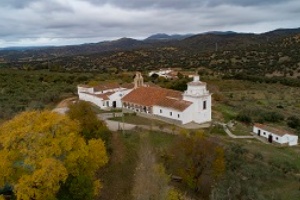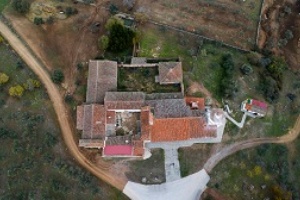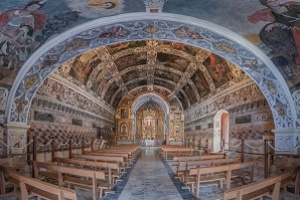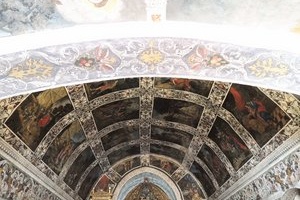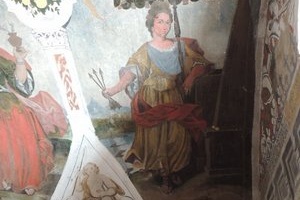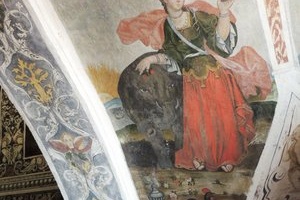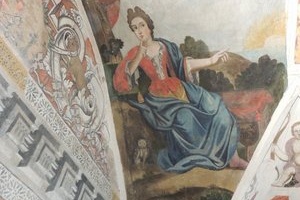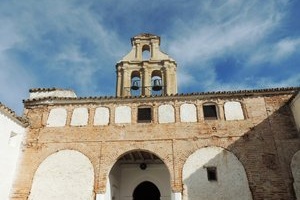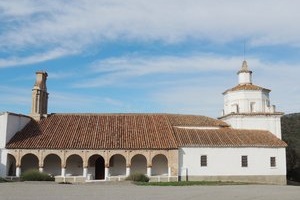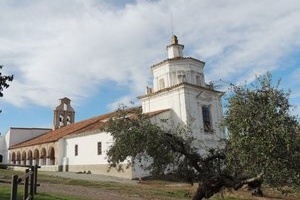Art and culture
Chapel of Nuestra Señora del Ara
The structure and architecture of the chapel of Nuestra Señora del Ara has evolved over time since it was built in the 14th century, but it still preserves the essence of the Mudejar style.
- Explore
- Chapel of Nuestra Señora del Ara
Mixture of styles
Location and Contact:
- Contact person: Ayuntamiento de Fuente del Arco
- Tel.:+34 674 312 099
- Tel.:+34 924 87 80 01
- Reservations tel. number: +34 924 87 80 02
- Fax: +34 924 87 81 51
- Email: ayuntamiento@fuentedelarco.es
- Website address: fuentedelarco.org/turismo/santuario/
- Facebook: https://www.facebook.com/Fuente-del-Arco-224803757728358
- Opening times
From 10am to 3pm. Monday closed.
Guided visits:
• 11am
• 12.30pm
• 2.15pmClosed: 8th, 9th, 10th and 11th of Septiembre; 24th, 25th and 31st of December; 1st and 6th of January.
- Fee
€1
-
The structure and architecture of the chapel of Nuestra Señora del Ara has evolved over time since it was built in the 14th century, but it still preserves the essence of the Mudejar style.
The chapel of Nuestra Señora del Ara, located in the foothills of the Sierra Morena and a few kilometres from the municipality of Fuente del Arco in Badajoz province, was built in the late 14th century. The arcade on the south façade of the church reveals the Mudejar style that was used in its design, which fuses with the Roman columns you will find on the door that leads to the interior. The church's only nave is covered by a barrel vault. In the courtyard you will see the adjoining buildings, designed by the Order of Santiago. The belltower is raised on the walls at the foot of the church and is comprised of two sections. From it you can see the mountains of the Sierra de San Miguel and the Sierra del Viento, and the banks of the Ara.
-
- Origin:
-
- 14th century
- Construction:
-
- Shrine
- Art period:
-
- Gothic
- Mudejar
- Period in history:
-
- Various periods
- Various styles
- 14th century
- Official name :
-
- Property of Cultural Interest
Gallery:
More suggestions
-
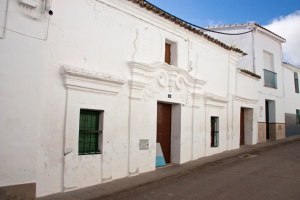
Fuente del Arco
The town of Fuente de Arco lies in the south of Extremadura in the foothills of the Sierra Morena mountains.
-
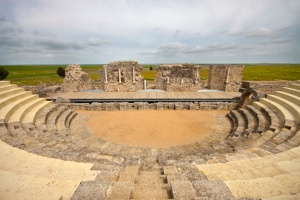
Romana Town of Regina
The Roman past returns through the valuable Roman remains found on the outskirts of the village of Casas de Reina in the province of Badajoz.
-

La Jayona Mine
Today, these former iron mines have become an ideal refuge for the area's wildlife and vegetation.
-
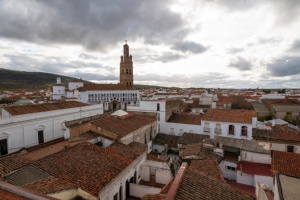
Llerena — an artistic centre
The importance of Llerena as a town attracted an endless flow of leading artists who enriched its heritage.
-
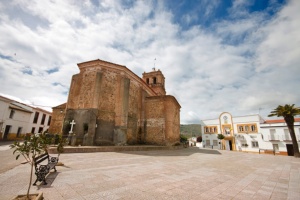
Casas de Reina
The Romans founded a city here that you can still visit today, its Regina Roman theatre taking pride of place among the attractions to be seen.
-
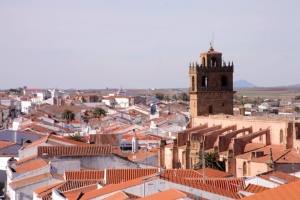
Azuaga
This rural town in south-east Extremadura has a unique climate.
-

Romana Town of Regina
The Roman past returns through the valuable Roman remains found on the outskirts of the village of Casas de Reina in the province of Badajoz.
-
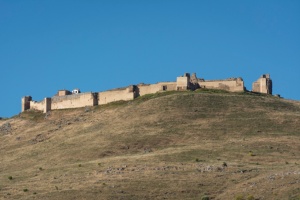
Reina Castle
Next to the town of Reina, this fortress was built by the Moslems and inherited by the Christians, becoming a part of the Order of Santiago.
-

La Jayona Mine
Today, these former iron mines have become an ideal refuge for the area's wildlife and vegetation.
-
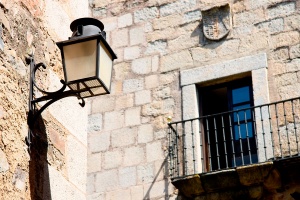
Trasierra
-

Valverde de Llerena
-

Casas de Reina
The Romans founded a city here that you can still visit today, its Regina Roman theatre taking pride of place among the attractions to be seen.
-

Fuente del Arco
The town of Fuente de Arco lies in the south of Extremadura in the foothills of the Sierra Morena mountains.
-

Reina


